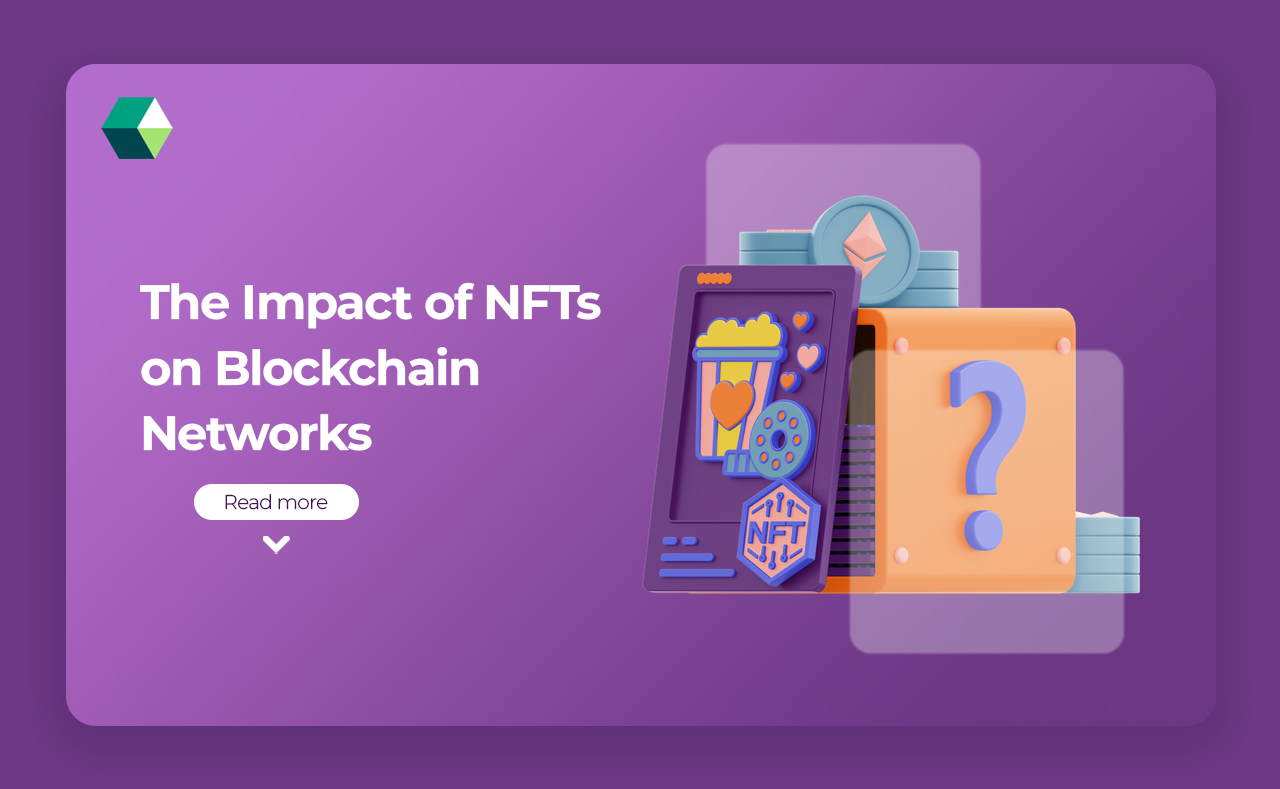The Impact of Blockchain Technology on NFTs

- Understanding the Basics of Blockchain Technology
- Exploring the Rise of NFTs in the Digital Art World
- The Role of Smart Contracts in NFT Transactions
- Challenges and Opportunities in the NFT Market
- The Future of NFTs: Trends and Predictions
- Regulatory Considerations for NFTs in the Blockchain Ecosystem
Understanding the Basics of Blockchain Technology
Blockchain technology is the underlying technology behind NFTs, which stands for non-fungible tokens. Understanding the basics of blockchain technology is crucial to grasp the impact it has on the world of NFTs.
Blockchain is a decentralized and distributed ledger technology that securely records transactions across a network of computers. Each transaction is stored in a block, which is then linked to the previous block, forming a chain of blocks – hence the name blockchain. This technology ensures transparency, security, and immutability of data, making it ideal for NFTs.
NFTs are unique digital assets that are indivisible and cannot be replicated. They are often used to represent ownership of digital art, collectibles, and other digital assets. The use of blockchain technology ensures that each NFT is authentic and cannot be duplicated, providing a secure way to buy, sell, and trade digital assets.
By leveraging blockchain technology, NFTs have revolutionized the way digital assets are bought and sold. The decentralized nature of blockchain eliminates the need for intermediaries, reducing transaction costs and increasing efficiency. Additionally, the transparency and security provided by blockchain technology give users peace of mind when dealing with NFTs.
In conclusion, understanding the basics of blockchain technology is essential to comprehend the impact it has on NFTs. The secure, transparent, and decentralized nature of blockchain technology has transformed the way digital assets are bought, sold, and traded through NFTs. Embracing this technology opens up new possibilities for creators, collectors, and investors in the digital space.
Exploring the Rise of NFTs in the Digital Art World
The rise of NFTs in the digital art world has been a game-changer for artists and collectors alike. NFTs, or non-fungible tokens, are unique digital assets that are stored on a blockchain. This technology allows for the creation of one-of-a-kind pieces of art that can be bought and sold with ease.
One of the key benefits of NFTs is that they provide a way for artists to monetize their work in a new and innovative manner. By tokenizing their art, artists can sell it directly to collectors without the need for intermediaries. This has the potential to revolutionize the art market and empower artists to take control of their own careers.
Collectors are also drawn to NFTs because of their scarcity and authenticity. Each NFT is unique and cannot be replicated, making it a valuable addition to any collection. Additionally, the blockchain technology used to create NFTs ensures that each piece of art is verifiable and cannot be tampered with.
As the popularity of NFTs continues to grow, we are seeing more and more artists experimenting with this new medium. From digital artists to traditional painters, creators from all backgrounds are exploring the possibilities of NFTs. This has led to a diverse range of art being tokenized, from digital illustrations to virtual reality experiences.
The Role of Smart Contracts in NFT Transactions
Smart contracts play a crucial role in NFT transactions by automating the process and ensuring that all parties involved adhere to the terms of the agreement. These self-executing contracts are stored on the blockchain and are triggered when certain conditions are met, eliminating the need for intermediaries and reducing the risk of fraud.
One of the key benefits of using smart contracts in NFT transactions is the increased security they provide. Since smart contracts are tamper-proof and immutable, they help to establish trust between buyers and sellers. Additionally, smart contracts can help to streamline the transaction process, making it faster and more efficient.
Another advantage of smart contracts in NFT transactions is their ability to enable royalties for creators. By embedding royalty terms into the smart contract, creators can automatically receive a percentage of the resale value every time their NFT is sold, ensuring that they continue to benefit from their work in the secondary market.
Overall, smart contracts are revolutionizing the way NFT transactions are conducted by providing a secure, efficient, and transparent method for buying, selling, and trading digital assets. As the NFT market continues to grow, smart contracts will play an increasingly important role in shaping the future of digital ownership.
Challenges and Opportunities in the NFT Market
As the NFT market continues to grow rapidly, it presents both challenges and opportunities for investors, creators, and platforms involved in the space. Understanding these dynamics is crucial for navigating this evolving landscape.
- One of the main challenges in the NFT market is the issue of scalability. As more users participate in buying and selling NFTs, blockchain networks can become congested, leading to higher transaction fees and slower processing times. This can hinder the overall user experience and limit the market’s growth potential.
- Another challenge is the lack of standardization in the industry. With different platforms using various blockchain protocols and smart contract standards, interoperability can be a significant hurdle. This fragmentation can make it challenging for users to navigate the market and for NFTs to reach their full potential.
- On the flip side, the NFT market also presents significant opportunities for innovation and growth. The ability to tokenize unique digital assets opens up new possibilities for creators to monetize their work and for investors to diversify their portfolios. This democratization of ownership can revolutionize the art, gaming, and entertainment industries.
- Furthermore, the transparency and immutability of blockchain technology provide a level of security and authenticity that is unparalleled in traditional markets. This trustless nature of NFT transactions can help reduce fraud and counterfeit issues, giving users more confidence in the assets they are buying and selling.
In conclusion, while the NFT market faces challenges such as scalability and standardization, it also offers exciting opportunities for innovation and growth. By addressing these challenges and leveraging the unique benefits of blockchain technology, the NFT market has the potential to reshape the digital economy in profound ways.
The Future of NFTs: Trends and Predictions
The future of non-fungible tokens (NFTs) is filled with exciting trends and predictions that are shaping the landscape of digital assets. As blockchain technology continues to evolve, NFTs are expected to become even more mainstream and integrated into various industries.
One trend that is gaining momentum is the use of NFTs in the art world. Artists are leveraging blockchain technology to create unique digital artworks that can be tokenized and sold as NFTs. This trend is revolutionizing the way art is bought and sold, providing artists with new opportunities to monetize their work.
Another prediction for the future of NFTs is their increased use in the gaming industry. Game developers are exploring the potential of NFTs to create in-game assets that players can buy, sell, and trade. This trend is expected to enhance the gaming experience and provide players with a new way to interact with their favorite games.
Furthermore, the real estate industry is also starting to adopt NFTs as a way to tokenize properties and streamline the buying and selling process. By using blockchain technology, real estate transactions can be made more secure, transparent, and efficient, leading to a more seamless experience for buyers and sellers alike.
In conclusion, the future of NFTs is bright, with trends and predictions pointing towards increased adoption and integration across various sectors. As blockchain technology continues to advance, NFTs are poised to revolutionize the way we buy, sell, and interact with digital assets, opening up new possibilities for creators, investors, and consumers alike.
Regulatory Considerations for NFTs in the Blockchain Ecosystem
When it comes to **regulatory considerations** for **NFTs** in the **blockchain ecosystem**, there are several important factors to keep in mind. **NFTs** have gained significant popularity in recent years, leading to increased scrutiny from regulators around the world. One of the key issues that regulators are focusing on is the **legal status** of **NFTs** and how they should be classified under existing **regulations**.
Another important consideration is **consumer protection**. **NFTs** are often bought and sold on **online platforms**, which can leave **consumers** vulnerable to **fraud** and **scams**. Regulators are looking at ways to **protect** **consumers** and ensure that they are **informed** about the **risks** associated with **NFT** transactions.
Additionally, **regulators** are concerned about **money laundering** and **terrorist financing** risks associated with **NFTs**. Because **blockchain** transactions are **anonymous** and **difficult** to **trace**, there is a **potential** for **bad actors** to use **NFTs** for **illicit** purposes. **Regulators** are working to **develop** **guidelines** to **address** these **concerns** and **mitigate** the **risks**.




